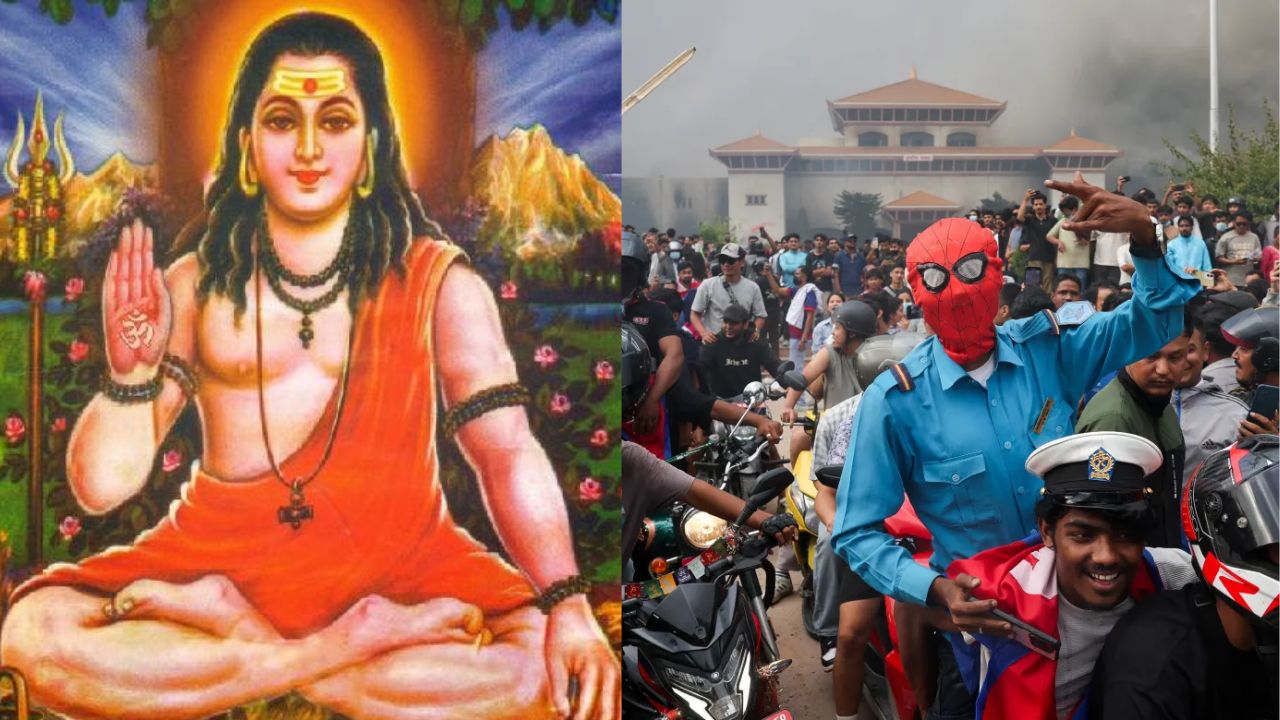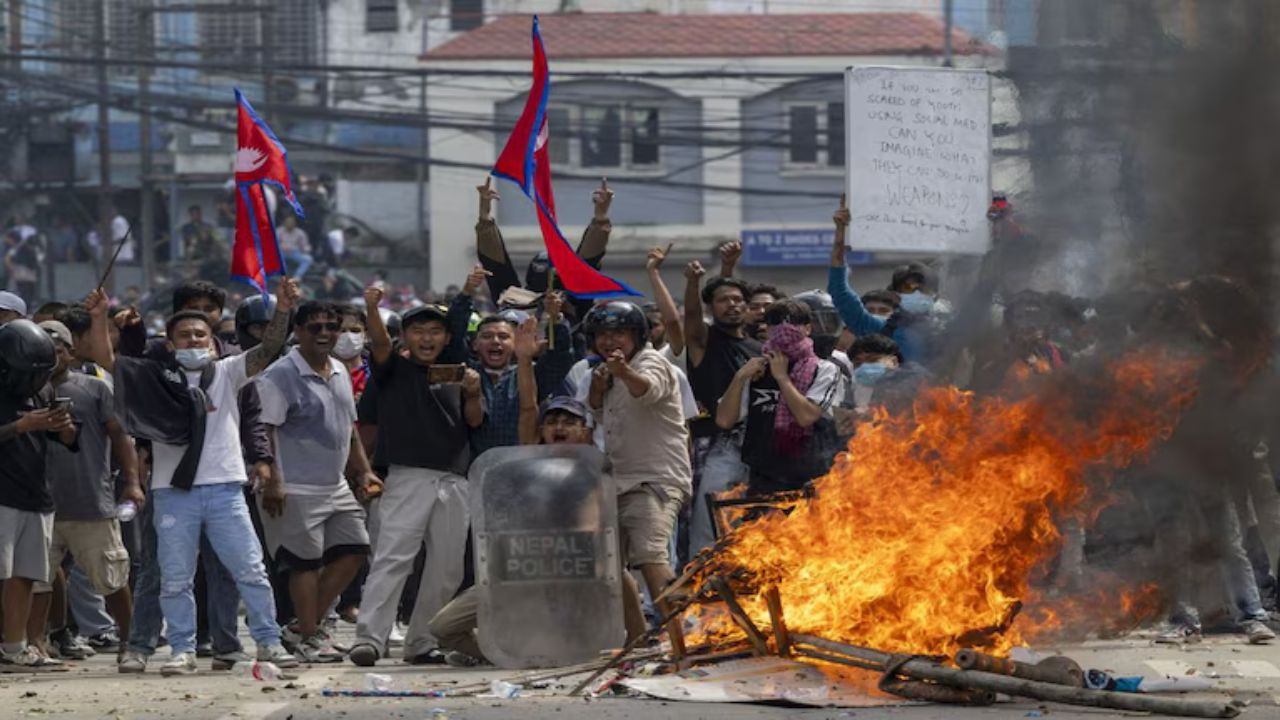 English
English

Over the past few days, Nepal has witnessed political turmoil, which has been galvanized into violent protest. After being pestered by structural failures of Nepal’s democratic experiment, people are asking whether Nepal will return to monarchy. What does the Guru Goraknath prophecy have to say about it?

Will Monarchy Return to Nepal? Guru Gorakhnath’s Prophecy Sparks Debate Amid Gen Z Uprising
Kathmandu: Nepal is once again going through a period of political instability these days. The fierce protests led by Gen Z, i.e., the youth, have shaken the foundation of the government. After the decision to ban social media, this movement became more intense, after which Prime Minister KP Sharma Oli had to resign.
Voices of discontent against the government had been heard in Nepal since the year 2025, but in September 2025, when social media platforms like Facebook, Instagram, and WhatsApp were banned, public anger erupted. Especially the youth, who consider social media as their voice and medium of expression, took to the streets and started protesting.
The special thing about these protests was that they were not only against corruption, but the demand for the return of the monarchy was also raised. Slogans of “Raja Aunuparchha” (The king must return) started resonating on the streets of Kathmandu. This slogan is no longer just a demand but has taken the form of a mass movement.
Amidst these events, people are again remembering the centuries-old prophecy of Guru Gorakhnath. It is said that in the 18th century, Gorakhnath blessed Nepal’s first unified king, Prithvi Narayan Shah, that the monarchy of his dynasty would last for eleven generations.
According to monarchy supporters, this prophecy was fulfilled with King Dipendra, who became king while being in a coma for some time during the 2001 palace massacre. While some people believe that he was not the eleventh generation and another generation is yet to come.

Ex Nepal PM's wife died after 'Gen-Z' protesters set their house on fire
Amidst this entire development, people's eyes are fixed on former King Gyanendra Shah, who has been almost away from public life since the monarchy ended in 2008. However, his daughter-in-law, Himani Shah, and grandson, Hridayendra, have been seen active among the public. So far, Gyanendra has not expressed any official desire to return to power.
In Nepal, after the declaration of the republic in 2008, governments have changed repeatedly in the 17 years, corruption has increased, and youth unemployment is at its peak. According to the World Bank report, the unemployment rate of youth in Nepal is 20%, and about 2000 youth are going abroad every day.
Social media is no longer just a means of entertainment but has become a platform for political consciousness for the youth. When it was shut down, the youth considered it an attempt to suppress the voice of democracy.
After KP Oli's resignation, the question is who will lead Nepal next. The major political parties are still in favor of a republic, but the growing voice of the youth and the public support pouring in on the streets is giving new energy to the return of the monarchy.
Nepal: PM KP Oli resigns amid protests; What next? An intense analysis
Whether Guru Gorakhnath's prophecy was fulfilled or not is a matter of debate, but the current situation definitely indicates that a new political chapter is about to open in Nepal—one that appears to be inspired by the past and colliding with the future.
No related posts found.